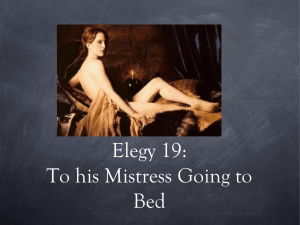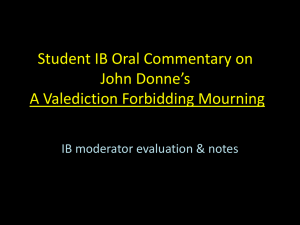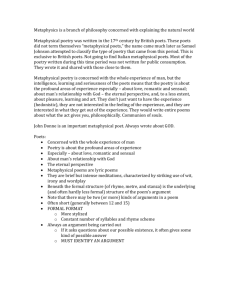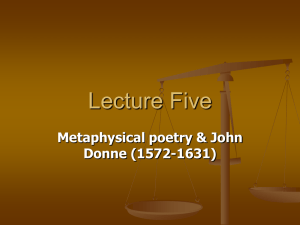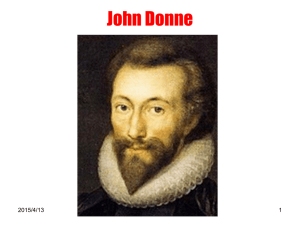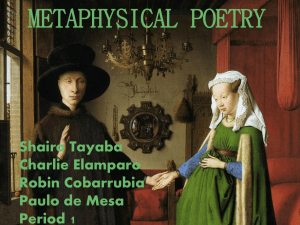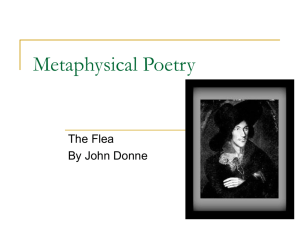Metaphysical conceits
advertisement
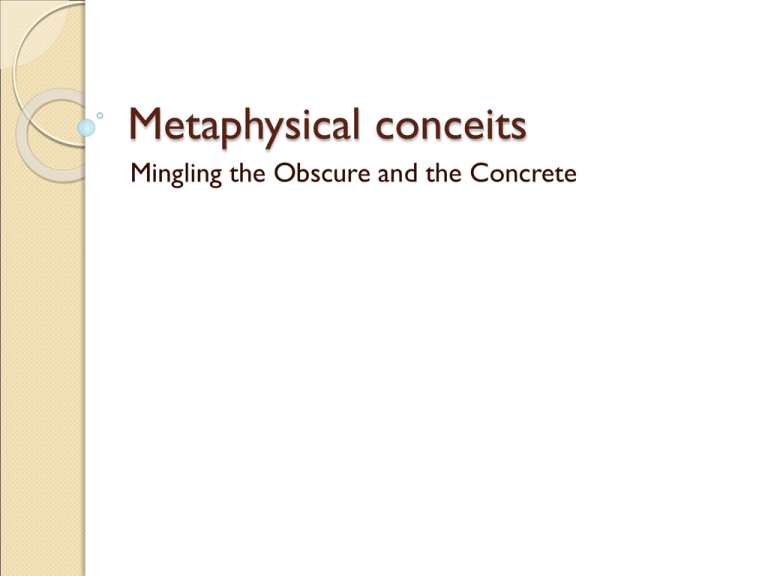
Metaphysical conceits Mingling the Obscure and the Concrete What is a Metaphysical Conceit? The Encyclopaedia Britannica states: -The metaphysical conceit [...] is a more intricate and intellectual device. It usually sets up an analogy between one entity’s spiritual qualities and an object in the physical world and sometimes controls the whole structure of the poem. Mostly meaning that an obscure idea (Life, Death, Love, etc.) is compared to something concrete, many times these ideas and things are dissimilar. "a conceit is a comparison whose ingenuity is more striking than its justness" and that "a comparison becomes a conceit when we are made to concede likeness while being strongly conscious of unlikeness." Background of Metaphysical Conceits A group of poets using the same style and wit were lumped together as the ‘metaphysical poets’ (including Donne) during the 17th century. To the best of my knowledge, the metaphysical conceit stemmed from the styles and poems of these writers. GAME TIME John Donne’s The Broken Heart A Bit About His Life "The typical Elizabethan with his love of eloquence, with his longing for brave new words, tended to enlarge and generalise....Donne's genius was precisely the opposite of this. He diminished; he particularised....It is this desire for nakedness in an age that was florid, this determination to record not the likenesses which go to compose a rounded and seemly whole, but the inconsistencies that break up semblances, the power to make us feel the different emotions of love and hate and laughter at the same time, that separate Donne from his contemporaries." -Virginia Woolf A Bit About His Life: Relationships Little seems to be known about his relationships with women before his marriage, though there are some who speculated him to be a womanizer. Donne seemed to love his wife very much (Example: - A Valediction: Forbidding Mourning). After 16 years of marriage she died, Donne never remarried. On to the Poem: Title Note the title. “Broken Heart’ can be seen as the emotional state, or a more literal situation later in the poem. The title gives the reader an idea of what the poem is about. On to the Poem: Stanza 1 Mostly an introduction to the poem. Sets the theme and mood of the poem. Sickness and fire imagery. Two metaphysical conceits: - Love compared to the plague -Love compared to gunpowder On to the Poem: Stanza 2 Donne develops this idea of love, an all consuming and fatal monster. Note capitalization of Love. (personification) Imagery of death and being devoured. Metaphors and similes referencing the chained shot, the pike, and the fry. Perhaps another metaphysical conceit: - Love compared to the pike The comparison of hearts to fry indicates vulnerability. On to the Poem: Stanza 3 Goes from speaking generally of to almost speaking to a lover. Again Love is portrayed more like a being, and the destroyer. Simile comparing hearts and glass. (depicts hearts as fragile) On to the Poem: Stanza 4 Winding down; conclusion of poem. Comparison of a broken heart to a broken mirror and to rags. Themes of destruction and death throughout the poem indicate the metaphysical conceit: - Love as compared to war Bibliography http://www.britannica.com/EBchecked/topic/377902/me taphysical-conceit http://www.sparknotes.com/poetry/donne/section1.rht ml http://www.luminarium.org/sevenlit/metaintro.htm http://en.wikipedia.org/wiki/Conceit http://www.luminarium.org/sevenlit/donne/donnebio.ht m http://www.notablebiographies.com/De-Du/DonneJohn.html Donne, John. The Complete Poetry & Selected Prose of John Donne. Toronto: Random House, 1994.
